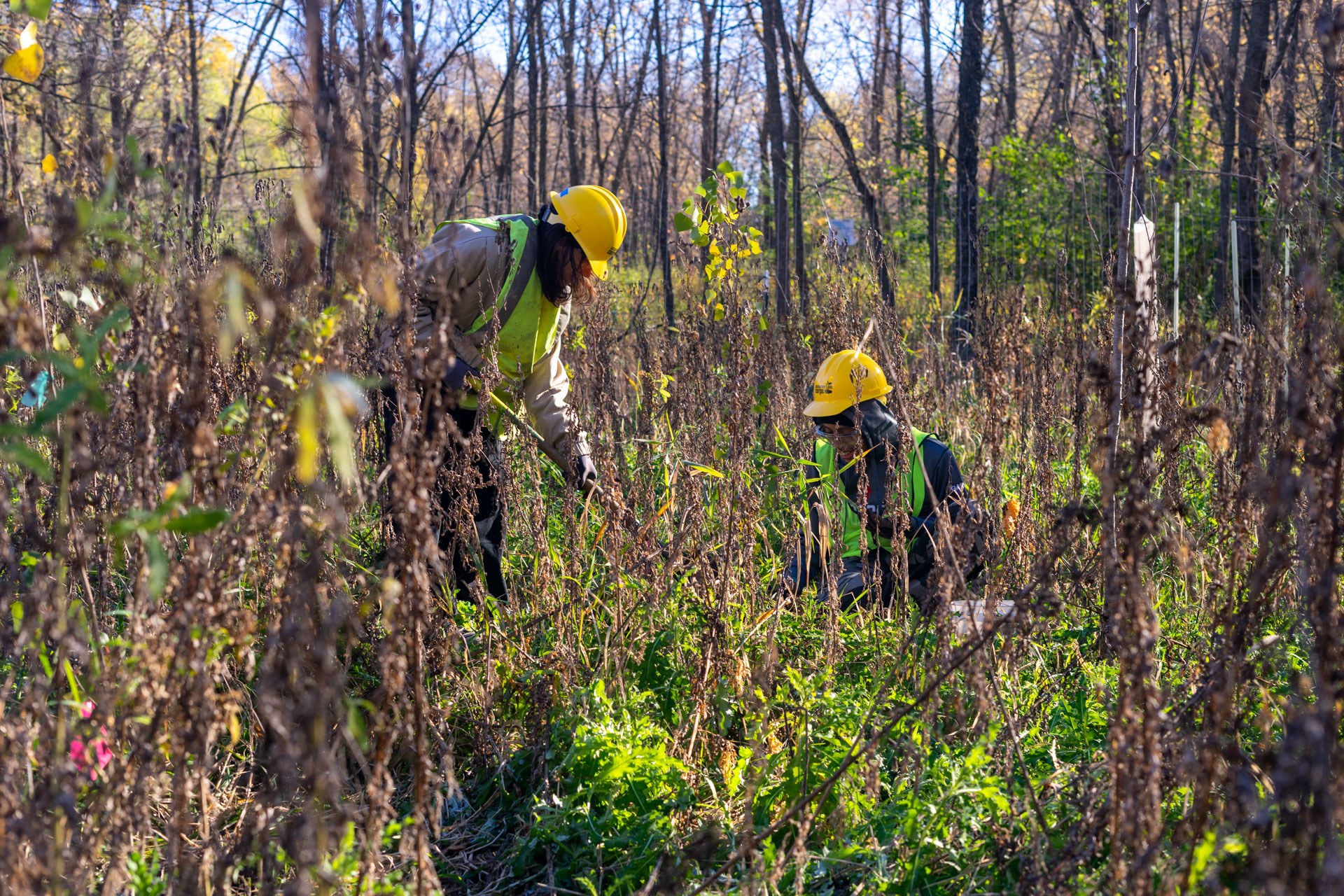The Circle of Life: Cutting and Planting Trees in Conservation Corps

By Sommer Meyer, Central Field Specialist / AmeriCorps Member
Planting trees is often seen as a very conservation-centered activity, and it is! But cutting down trees can also help the ecosystem just as much, contrary to how many people see it. Conservation Corps often partakes in tree-planting AND tree-cutting projects, and there are several reasons why we plant certain trees and remove certain trees.
We often plant trees because, well, trees are good! Trees take up carbon dioxide (CO2) and release oxygen (O2), reducing climate change as a result of carbon dioxide and increasing the amount of air we breathe! When trees absorb carbon dioxide, they also help absorb air pollutants, cleaning the air and providing increased air quality. Additionally, trees have been shown to reduce soil erosion, improve water quality, and provide health benefits. If all that isn’t enough reason to plant trees, they also give us shade for those hot summer days and places for our critter friends to build their homes! Tree planting projects in Conservation Corps are often centered around restoring forest ecosystems or improving our local parks.

The reasons why we plant trees may be clear, but it may be harder to understand why cutting down trees also provides a benefit to the environment. Simply put – we remove trees that are not supposed to be where they are, or are creating potential hazards for people or the surrounding environment.
Buckthorn is perhaps the most notorious invasive woody species, however several others exist as well. Black locust, Amur maple, Norway maple, and Siberian elm are all invasive tree species in Minnesota. These trees will often displace or limit the growth of native species, especially in prairie or savanna ecosystems, where they shade-out other plants and soon come to dominate the area.
Eastern red cedars, while native to Minnesota and the greater Midwest, have developed invasive tendencies that require their removal. Previously held in check by the wildfires that would burn through grasslands, Eastern red cedars now encroached out of their natural forest ecosystems and into prairies and savannas, where they shade out the native grasses, often leaving empty space for other invasive species such as buckthorn to begin growing. In order to retain Minnesota’s important grassland ecosystems, it is often necessary to remove the Eastern red cedars, either by prescribed fire or cutting them down.
While Conservation Corps does a lot of removal of invasive trees, we also remove trees infested with invasive disease. The top three invasive diseases plaguing trees in Minnesota are the emerald ash borer, an invasive insect that is quickly killing our ash trees, oak wilt, an invasive fungi that (as the name suggests) causes oaks to wilt and eventually die, and Dutch elm disease, another invasive fungi that similarly kills elms. These invasive insects and diseases, among a handful of other (so far) less severe ones, can quickly spread from tree to tree, until every tree of that species in the area is dead. By removing diseased trees, Conservation Corps can help slow down the spread of these deadly invasives.
Lastly, Conservation Corps will often remove a tree if it’s a threat to the people around it. When trees begin to die, they become structurally compromised and can sometimes fall over with the slightest bit of force, such as an animal climbing it or a strong wind gust. Out in the middle of a forest this is not much of a concern – in fact there are some species that rely on hollowed-out or decaying wood matter – but along roads or trails these trees can become a major hazard. In areas with an especially high concentration of dead or dying trees (such as an area infested with emerald ash borer or oak wilt), Conservation Corps may remove the trees closest to a trail or that pose the greatest threat of falling, making the parks safer for everyone!
